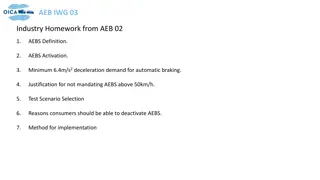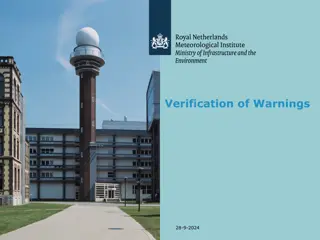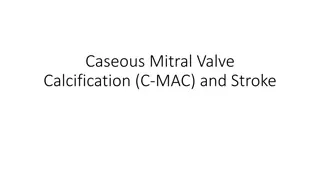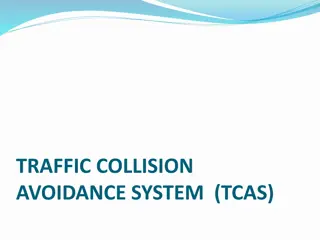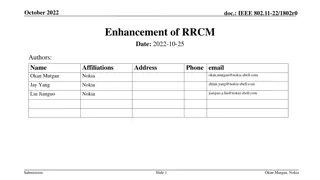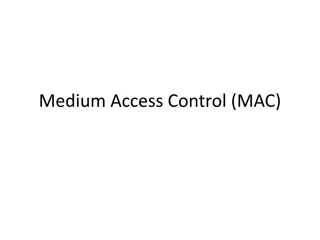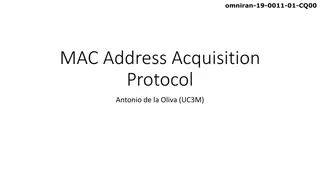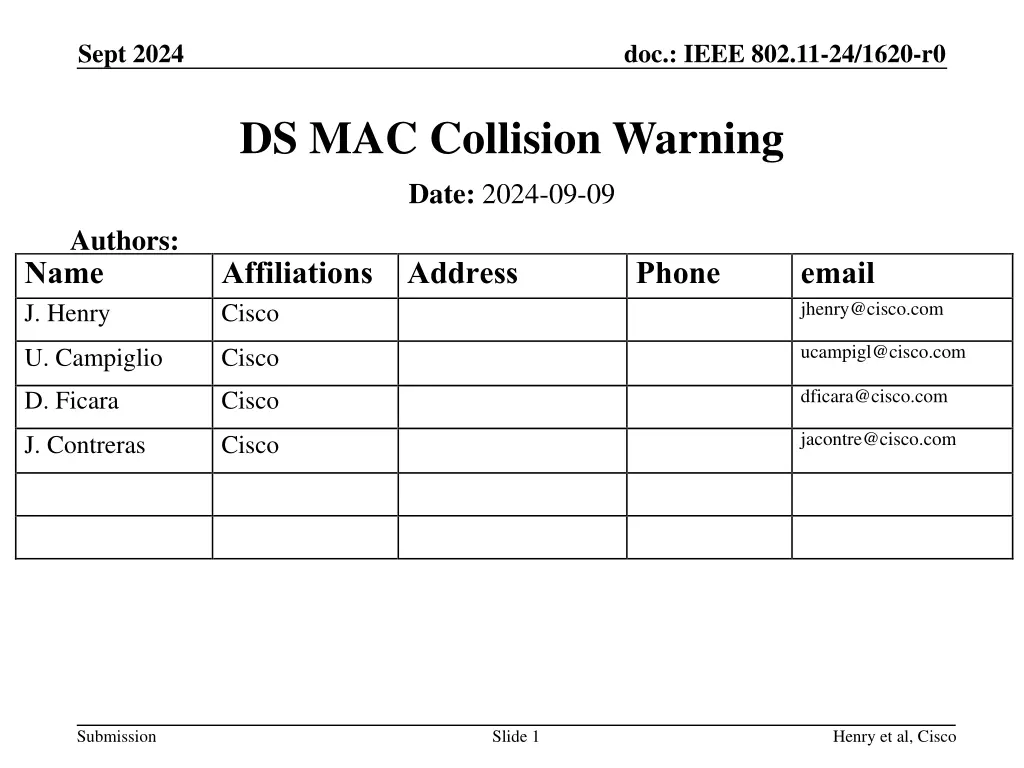
Proposal for IEEE 802.11-24 DS MAC Collision Warning Mechanism
This document outlines a proposal for a collision warning mechanism for the non-AP MLD DS MAC in IEEE 802.11-24. It addresses the challenge of informing the AP about MAC addresses associated with non-AP MLDs and ensuring proper frame forwarding between different mediums. The proposal aims to enhance communication efficiency and network management in wireless networks.
Download Presentation

Please find below an Image/Link to download the presentation.
The content on the website is provided AS IS for your information and personal use only. It may not be sold, licensed, or shared on other websites without obtaining consent from the author. If you encounter any issues during the download, it is possible that the publisher has removed the file from their server.
You are allowed to download the files provided on this website for personal or commercial use, subject to the condition that they are used lawfully. All files are the property of their respective owners.
The content on the website is provided AS IS for your information and personal use only. It may not be sold, licensed, or shared on other websites without obtaining consent from the author.
E N D
Presentation Transcript
Sept 2024 doc.: IEEE 802.11-24/1620-r0 DS MAC Collision Warning Date: 2024-09-09 Authors: Name J. Henry Affiliations Address Cisco Phone email jhenry@cisco.com ucampigl@cisco.com U. Campiglio Cisco dficara@cisco.com D. Ficara Cisco jacontre@cisco.com J. Contreras Cisco Submission Slide 1 Henry et al, Cisco -
Sept 2024 doc.: IEEE 802.11-24/1620-r0 Abstract Proposal for a collision warning mechanism for the non- AP MLD DS MAC Submission Slide 2 Henry et al, Cisco -
Sept 2024 doc.: IEEE 802.11-24/1620-r0 Background DS MAC is advertised by the non-AP MLD at association time Its goal is to inform the AP on what MAC address the non-AP MLD would like to be known as, over the DS Draft 0.5 cl. 9.4.2.336: The DS MAC Address element is used by a non-AP STA that is not affiliated with a non-AP MLD or a non-AP MLD to provide the DS MAC address to the AP or an AP MLD, respectively, to be used for the DS mapping. The format of the DS MAC Address element is shown in Figure 9-1001de (DS MAC Address element format). Element ID Extension 1 DS MAC Address 6 Element ID Length Octets: 1 1 DS MAC Address element format Submission Slide 3 Henry et al, Cisco -
Sept 2024 doc.: IEEE 802.11-24/1620-r0 DS MAC Challenge The AP acts as a bridge between the 802.11 and the DS (e.g. Ethernet) mediums When the AP receives a frame on the DS, it needs to know if it should forward the frame to the 802.11 medium or not What happens if the non-AP MLD signals a DS MAC that is an already existing entity on the DS? - - - DS 1. I am a.b.c Submission Slide 4 Henry et al, Cisco -
Sept 2024 doc.: IEEE 802.11-24/1620-r0 DS MAC Challenge The AP acts as a bridge between the 802.11 and the DS (e.g. Ethernet) mediums When the AP receives a frame on the DS, it needs to know if it should forward the frame to the 802.11 medium or not What happens if the non-AP MLD signals a DS MAC that is an already existing entity on the DS? - - - DS a.b.c 2. My DS MAC shall be a.b.c Submission Slide 5 Henry et al, Cisco -
Sept 2024 doc.: IEEE 802.11-24/1620-r0 DS MAC Challenge The AP acts as a bridge between the 802.11 and the DS (e.g. Ethernet) mediums When the AP receives a frame on the DS, it needs to know if it should forward the frame to the 802.11 medium or not What happens if the non-AP MLD signals a DS MAC that is an already existing entity on the DS? - - - TA = a.b.c DS a.b.c a.b.c ?? Er.. Is this the STA (forward) or the DS box (ignore)? Submission Slide 6 Henry et al, Cisco -
Sept 2024 doc.: IEEE 802.11-24/1620-r0 DS MAC Challenge The AP acts as a bridge between the 802.11 and the DS (e.g. Ethernet) mediums When the AP receives a frame on the DS, it needs to know if it should forward the frame to the 802.11 medium or not What happens if the non-AP MLD signals a DS MAC that is an already existing entity on the DS? - - - ?? Er.. Left or right? a.b.c a.b.c TA = a.b.c Submission Slide 7 Henry et al, Cisco -
Sept 2024 doc.: IEEE 802.11-24/1620-r0 DS MAC Collision If the DS MAC signaled by the non-AP MLD is already known on the DS, then the AP should tell the non-AP MLD - We need a DS MAC collision warning frame. Could work like this: 1. The non-AP MLD sends the DS MAC in the (re)assoc Request 2. If the MAC is already known on the DS, the AP replies (in the (re)assoc Response - Path 1: the AP uses a temporal DS MAC, the non-AP MLD sends post-assoc an action frame with the next DS MAC - Path 2: the non-AP MLD sends a (re)assoc request with a new DS MAC - Path 3: the non-AP MLD uses the MAC suggested by the AP (does the non-AP MLD care which MAC is seen over the DS?) - Submission Slide 8 Henry et al, Cisco -
Sept 2024 doc.: IEEE 802.11-24/1620-r0 Conclusion DS MAC signaled by the non-AP MLD can collide with over-the-DS entities When such collision happens, the AP should tell the non-AP MLD Remediation mechanisms should allow the non-AP MLD to use another, non-colliding DS MAC Submission Slide 9 Henry et al, Cisco -
Sept 2024 doc.: IEEE 802.11-24/1620-r0 Straw Poll Do you agree to insert a DS MAC collision warning in 802.11bi? Yes No Abstain Submission Slide 10 Henry et al, Cisco -



